Rare Diseases of Larynx, Trachea and Thyroid
- PMID: 34352904
- PMCID: PMC8363221
- DOI: 10.1055/a-1337-5703
Rare Diseases of Larynx, Trachea and Thyroid
Abstract
This review article covers data on rare diseases of the larynx, the trachea and the thyroid. In particular, congenital malformations, rare manifestations of inflammatory laryngeal disorders, benign and malignant epithelial as well as non-epithelial tumors, laryngeal and tracheal manifestations of general diseases and, finally, thyroid disorders are discussed. The individual chapters contain an overview of the data situation in the literature, the clinical appearance of each disorder, important key points for diagnosis and therapy and a statement on the prognosis of the disease. Finally, the authors indicate on study registers and self-help groups.
Der Übersichtsartikel beinhaltet eine Zusammenstellung seltener Erkrankungen von Larynx, Trachea und Schilddrüse. Im Speziellen werden angeborene Fehlbildungen, seltene Formen der entzündlichen Larynxerkrankungen, gutartige und bösartige epitheliale sowie nicht-epitheliale Tumoren, laryngeale und tracheale Manifestationen von Allgemeinerkrankungen und schließlich seltene Erkrankungen der Schilddrüse besprochen. Die einzelnen Kapitel beinhalten eine Übersicht über die Datenlage in der Literatur, das jeweilige klinische Erscheinungsbild, wichtige Stichpunkte zur Diagnostik und zur Therapie und eine abschließende Stellungnahme zur Prognose der Erkrankung. Des Weiteren finden sich Hinweise zu Studienregistern und Selbsthilfegruppen.
The Author(s). This is an open access article published by Thieme under the terms of the Creative Commons Attribution-NonDerivative-NonCommercial-License, permitting copying and reproduction so long as the original work is given appropriate credit. Contents may not be used for commercial purposes, or adapted, remixed, transformed or built upon. (https://creativecommons.org/licenses/by-nc-nd/4.0/).
Conflict of interest statement
Die Autorinnen/Autoren geben an, dass kein Interessenkonflikt besteht.
Figures






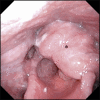

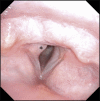

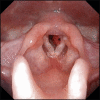


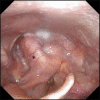










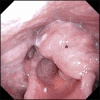

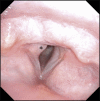

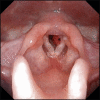


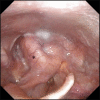






Similar articles
-
[Variants and early symptoms of congenital diseases of larynx and trachea].Vestn Otorinolaringol. 1996 Sep-Oct;(5):13-8. Vestn Otorinolaringol. 1996. PMID: 8999636 Review. Russian.
-
[The larynx, the trachea].Arch Otorhinolaryngol Suppl. 1986;2:146-59. Arch Otorhinolaryngol Suppl. 1986. PMID: 3469945 German. No abstract available.
-
[Imaging diagnostics of the pharynx and larynx].Radiologe. 2005 Sep;45(9):828-36. doi: 10.1007/s00117-005-1257-3. Radiologe. 2005. PMID: 16079968 German.
-
[Adenoid cystic carcinoma of the larynx, trachea and thyroid].Otolaryngol Pol. 1995;49(5):475-9. Otolaryngol Pol. 1995. PMID: 8714574 Polish.
-
Laryngeal Dysfunction: Assessment and Management for the Clinician.Am J Respir Crit Care Med. 2016 Nov 1;194(9):1062-1072. doi: 10.1164/rccm.201606-1249CI. Am J Respir Crit Care Med. 2016. PMID: 27575803 Review.
Cited by
-
[Lesions of the visceral mediastinum].Radiologie (Heidelb). 2023 Mar;63(3):172-179. doi: 10.1007/s00117-023-01116-9. Epub 2023 Jan 30. Radiologie (Heidelb). 2023. PMID: 36715716 Review. German.
-
Four Years of Disease-Free Survival After Conservative Treatment of Subglottic Adenoid Cystic Carcinoma.Cureus. 2022 Aug 25;14(8):e28377. doi: 10.7759/cureus.28377. eCollection 2022 Aug. Cureus. 2022. PMID: 36171834 Free PMC article.
References
-
- Holinger L D. Etiology of Stridor in the Neonate, Infant and Child. Ann Oto Rhinol Laryn. 1980;89:397–400. - PubMed
-
- Friedman E M, Vastola A P, Mcgill TJ I et al.Chronic Pediatric Stridor – Etiology and Outcome. Laryngoscope. 1990;100:277–280. - PubMed
-
- Zoumalan R, Maddalozzo J, Holinger L D. Etiology of stridor in infants. Ann Oto Rhinol Laryn. 2007;116:329–334. - PubMed
-
- Hoff S R, Schroeder J W, Rastatter J C et al.Supraglottoplasty outcomes in relation to age and comorbid conditions. Int J Pediatr Otorhi. 2010;74:245–249. - PubMed
-
- Krashin E, Ben-Ari J, Springer C et al.Synchronous airway lesions in laryngomalacia. Int J Pediatr Otorhi. 2008;72:501–507. - PubMed
Publication types
MeSH terms
LinkOut - more resources
Full Text Sources

